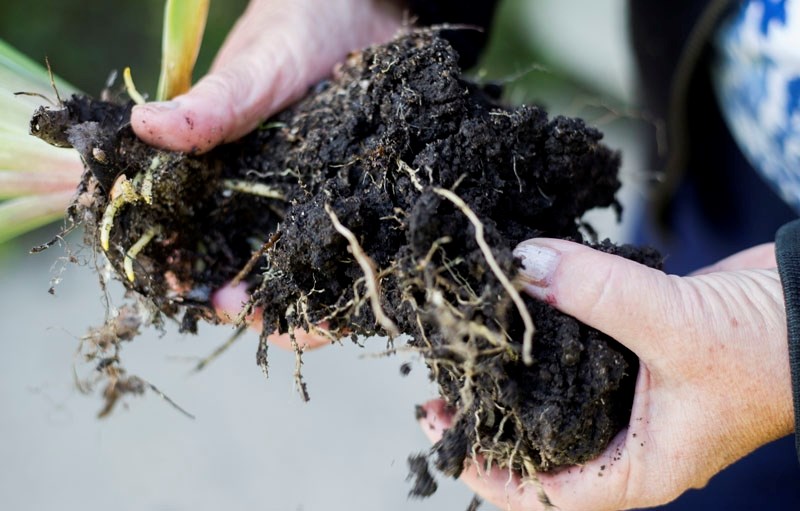If you hanker for one last planting session in your garden, consider the promise that bearded irises provide, with little or no work.
Irises are the kind of flower you stick in a warm, well-drained spot in your garden in the fall and then walk away and forget about – forever. In winter you shovel the snow on them and brush the debris from the driveway onto their hunkered down leaves. It's unlikely they will even get fertilized, yet early next June you will be rewarded with a display of the most elegant sophisticated flowers that nature produces.
In my own yard, I have a two-foot wide section of land between the fence and the driveway, where the only thing that grows easily are blue and white bearded irises. Despite salt from the driveway and exhaust from cars, they still bloom. Best of all, they boast a light, saucy perfume that suits their exotic look.
After the irises bloom, I ignore them but the leaves fill the space. There's no room beside the plants for any other flowers, and that's the main drawback of irises. They need a place all their own.
Stephen Raven, of Hole's perennial department, says irises aren't a favourite in his own garden because he wants more planting options.
"For me, when they are flowering, irises are glorious but they don't bloom for a long period of time," Raven said, stressing at the same time that the foliage needs to remain growing, even after the blooms fade.
"You can't chop away at the foliage because it needs the leaves to set up re-blooming next year," he said.
Two main types of irises are hardy in Central Alberta: bearded irises, which have fuzzy throats and the dainty looking Siberian irises. This article only refers to bearded irises, because they should be planted in the fall. Siberian irises should be planted in the spring.
Warm shoulders
Bearded irises are so easy to grow they hardly need to be planted. I once split some irises and carelessly threw the pull-apart new plants near the compost heap. The next spring, the poor neglected things grew and set out a few pathetic blooms in their shady new home behind the garage.
The correct way to split irises is to gently break apart the prospective new plants from the older rhizome. This process allows the older plant to produce more blossoms. You can give the new "babies" away, or replant throughout your garden.
"The new plant will have a fan of roots. Place the fan of roots facing the way you want the best show of flowers. Face the rhizome (the fleshy root-like part) away from the way you wish the flowers to blossom," said Raven.
Leave the shoulders of the rhizome uncovered and only put a bit of soil to anchor the fan of roots. Irises grow best in shallow plantings such as this where they can soak up the heat. Bearded irises do not grow well in wet areas and prefer drier, well-drained soil.
Perhaps the most spectacular iris display in St. Albert is at the botanic park. Unlike my irises, these plants are truly loved and tended with care. The variety ranges from the tiny, early blooming dwarf irises up to later-blooming varieties, some of which have flowers as big as your splayed-out hand.
Some iris hybrids are said to bloom twice in a summer, but that's unlikely to happen here in our Zone 3 growing climate, Raven said.
"We are too far north. If you get your irises to bloom twice, consider yourself lucky," said Raven.
According to the ancient Greeks, Iris is the God of Rainbows and the new hybrids live up to their namesake.
With names such as Blue Suede Shoes, Midnight Oil and Calypso Beat, you might find yourself singing as you plant these blue/purple/pink/black/yellow and even raspberry-pink irises.
"My favourite is Honey Glaze. It is soft yellow and gold in colour and it is outstanding," said botanic park volunteer Patricia Bell.




